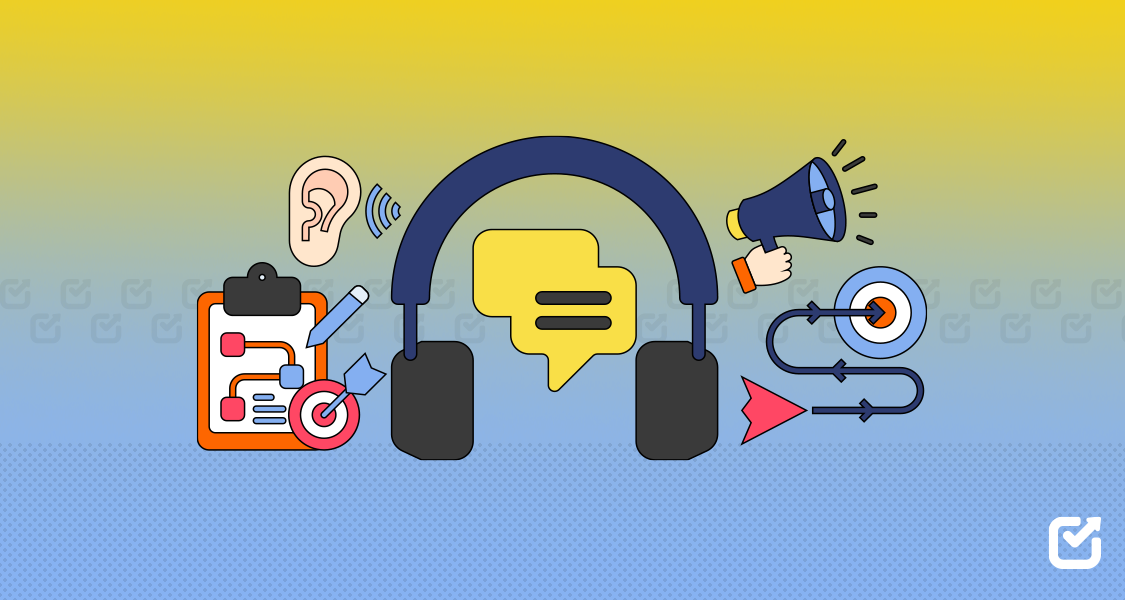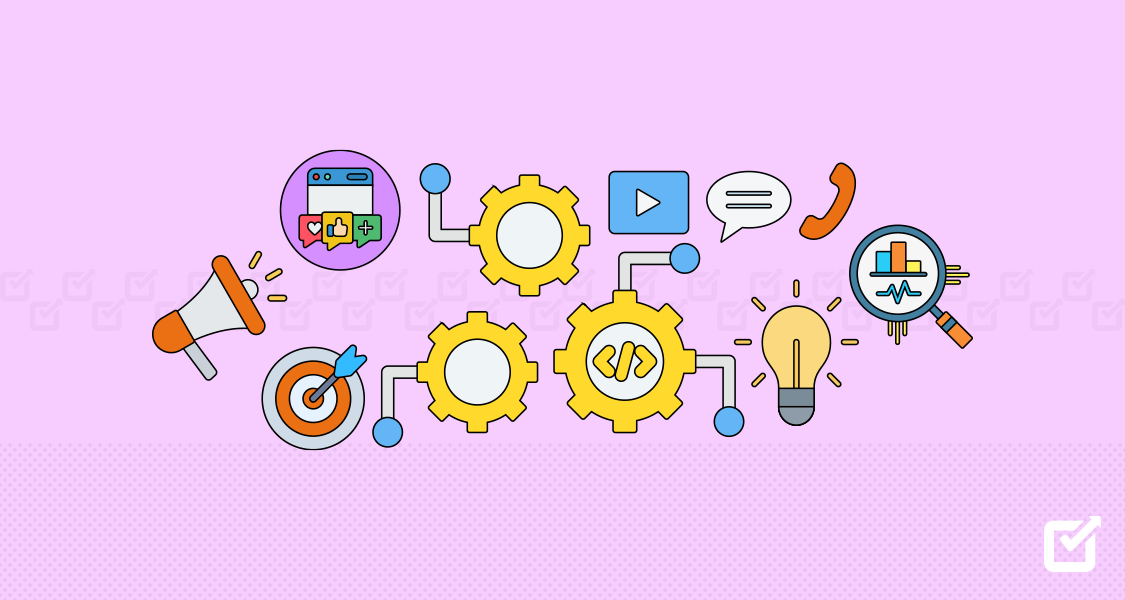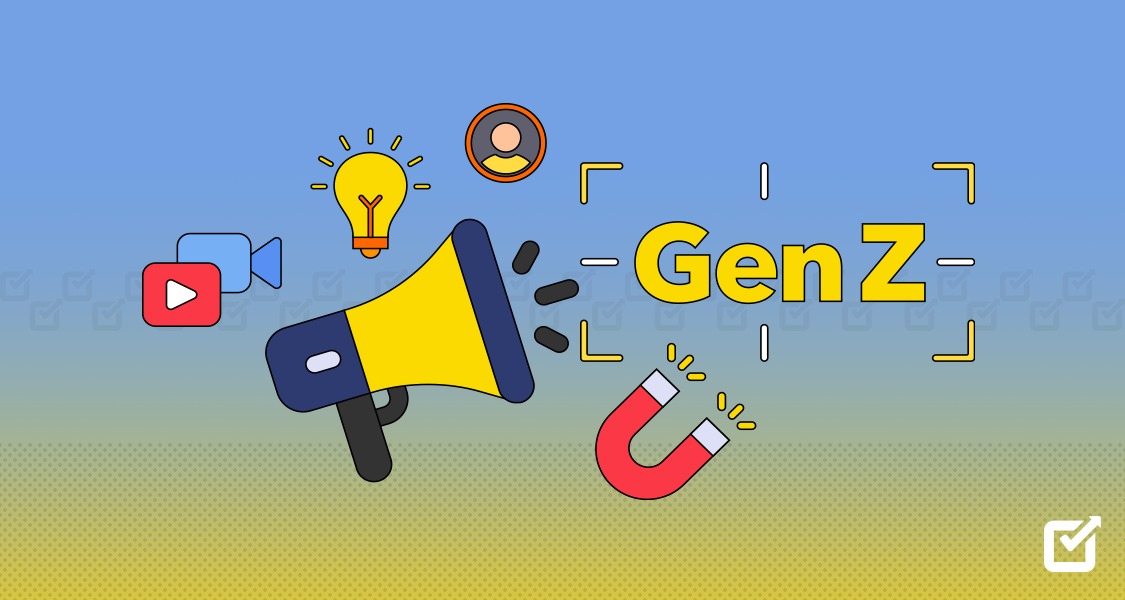Are you actually listening to what your customers are saying online?
In 2025, an effective social listening strategy is more important than ever for agencies and businesses seeking to drive engagement and gain actionable insights.
With more than 5 billion social media users worldwide, every conversation, tweet, and post has the power to unlock rich information that can help shape your brand’s strategy.
However, only 20% of businesses are actually leveraging social listening tools.
If you’re not paying attention to what’s being said about your brand, you’re missing out on opportunities.
An effective social media listening strategy does more than simply follow trends—it reveals customer pain points, enhances satisfaction, and increases engagement.
In this blog, we’ll guide you through creating a social listening strategy that increases engagement and provides you with actionable insights to remain ahead of the game.
Let’s get started!

Maximize Your Social Strategy With Social Champ!
Gain powerful insights to fuel smarter decisions and improve your engagement. Take action now before your competition does!
Short Summary
- A social listening plan is crucial for businesses to remain competitive in 2025.
- Social listening enables companies to listen to customer opinions, follow trends, and gather insights from social media.
- Best practices in social listening are having clear goals, choosing the right tools, and interpreting data correctly.
- The success with social listening depends on knowing what your audience is talking about and doing something about it.
- Social Champ offers a great social listening tool with real-time monitoring and sentiment analysis features.
- A solid social listening strategy enhances brand reputation, finds market trends, and effectively communicates with your audience.
- Social listening enables companies to respond quickly to customer complaints, build trust, and prevent crises.
What Is Social Listening & Why It Matters for Businesses?
Today, a social listening strategy is more important than ever for businesses.
But what exactly is social listening?
Social listening is simply monitoring and analyzing online conversations to understand customer opinion, identify upcoming trends, and gain insights that can directly impact business decisions.
It involves monitoring mentions of your brand and wider conversations that may affect your business.
Social Listening vs Social Monitoring: What’s the Difference?
Whereas both social media listening strategy and social monitoring deal with tracking online conversations, they differ in scope:
- Social Monitoring: Focuses on monitoring particular keywords, hashtags, or mentions of your brand. It’s usually reactive, spotting conversations as they occur.
- Social Listening: Extends beyond tracking to examine wider trends and opinions. It involves digging deeper into the context of discussions, enabling companies to gain actionable insights on a larger scale.
Why Brands Need a Successful Social Listening Strategy
A good social listening strategy is vital for agencies wanting to stay ahead of the curve.
Here’s why:
- Understand Customer Sentiment: Listening to your audience can help you get an idea of how they feel about your brand, products, or industry. This can help you in improving your offerings and customer experience.
- Spot Emerging Trends: Social listening enables you to see changes in consumer behavior or industry trends before they go mainstream.
- Improve Real-Time Engagement: By tracking conversations, brands can react to customer demands in real time, creating deeper relationships and loyalty.
Social Listening Best Practices
To get the most out of social listening, keep these best practices in mind:
- Monitor Competitors: Pay attention to what your competitors say and how their audience responds.
- Track Sentiment: Check the tone of conversations—are they discussing your brand positively or negatively?
- Engage in Real-Time: Observing is not enough—immediately act on customer questions, complaints, or compliments.
By following these best practices for social listening, you will communicate more effectively with your customers, enhance your brand’s reputation, and make informed decisions.
Featured Article: TikTok Business Account: A Complete Guide to Grow Your Brand in 2025
5 Key Benefits of a Strong Social Listening Strategy
In this digital era, a social listening strategy is no longer just a trend; it’s an essential component for businesses that want to stay relevant and competitive.
By monitoring social conversations in real-time, businesses can gain a wealth of insights that can enhance customer interactions, brand reputation, and performance.
So, how does a social media listening strategy help you?
Let’s break down the five major benefits:
-
Brand Reputation Management
What’s being said about your brand online?
Managing your brand’s reputation at the moment is crucial, and social listening helps lead the way.
Tracking customer feedback, positive or negative, enables companies to:
- Reply promptly to customer complaints or issues before they grow out of control.
- Address issues head-on, showing your audience you truly care about their experience.
- Establish trust by showing your dedication to customer service and resolving issues.
-
Customer Insights and Sentiment Analysis
Do you know what your customers are truly thinking?
Social media listening strategy lets you tap into the pulse of your audience, understanding their emotions, preferences, and concerns.
Here’s how it can help:
- Track Sentiment: Analyze whether customers are happy or frustrated with your brand.
- Discover Pain Points: Find areas where your product or service may fall short.
- Find Brand Advocates: Identify loyal customers ready to provide positive word-of-mouth.
Such a level of understanding enables businesses to make data-driven decisions, enhance customer experiences, and refine product offerings based on real-time feedback.
-
Competitive Intelligence
Are you monitoring your competition?
Social listening enables you to collect rich insight into the strengths and weaknesses of your competition.
By tracking:
- Competitor Mentions: See what customers are posting about your competitors.
- Customer Complaints: View where your competitors could be losing their way and gain opportunities for your business to thrive.
- Market Positioning: Follow how the competition is positioned within the marketplace and adjust your strategy accordingly.
Monitoring competitors helps companies adjust promptly and gain a competitive edge.
-
Trend Tracking and Market Opportunities
Do you know what trends will soon become popular?
With social listening, you can detect early trends in your business sector so you can jump on them while others are unaware.
The primary advantages are:
- Catch Early Trends: Identify customer behavior shifts and market needs before they affect everyone else.
- Adapt Products or Services: Roll out new ones based on what’s trending in your sector.
- Position Your Brand as an Innovator: Stand out by being the first to respond to market changes.
Social listening allows you to glimpse the future, enabling you to seize new opportunities.
-
Crisis Prevention and Response
Do you have a crisis management plan in place?
Social listening is essential for preventing crises or responding quickly if one arises.
Tracking conversations can help businesses:
- Spot Early Warning Signs: A sharp increase in negative posts might suggest an emerging crisis.
- Respond Swiftly: Answer customer complaints before they escalate into a more significant issue.
- Mitigate Damage: Take control of the story by confronting the issue directly and demonstrating your resolve to fix it.
Proactiveness through social listening prevents companies from avoiding PR disasters and keeps their brand image in check.
Through a social media listening strategy, companies can have a competitive edge in several categories: reputation management, customer intelligence, competitor analysis, trend identification, and crisis prevention.
Integrating social listening best practices into your day-to-day operations enhances customer engagement and enables you to make better decisions and remain competitive.
How to Build an Effective Social Listening Strategy?
Are you ready to elevate your social media engagement?
A good social listening strategy can help you leverage valuable insights, enhance customer relationships, and outperform the competition.
But how do you actually create one?
Let’s break it into actionable steps to ensure your social media listening strategy is spot on.
-
Setting Clear Goals
Before you dive into social listening, it’s helpful to have an idea of what you’re listening for.
Are you trying to enhance your brand reputation? Monitor customer sentiment? Identify trends?
Clear, measurable goals are the starting point for developing an effective strategy.
Ask yourself:
- What do I want to discover from social media discussions?
- Am I listening for customer comments, brand name, or competitor activity?
- How will I define success—increased engagement, improved customer satisfaction, or faster response times?
Your social listening activities will remain targeted, keeping particular goals in mind so that you gather the right data that aligns with your business goals.
-
Choosing the Right Social Listening Tools
Once you have identified your objectives, the next step is to select the right tools to help you listen.
Numerous social listening tools are available, each with different features that help you track conversations, monitor keywords, and measure sentiment.
The following are some of the considerations when selecting your tools:
- Ease of Use: Select a tool that is easy to use and suits your team’s abilities.
- Coverage: Does it cover several platforms where your audience is present—X, Instagram, Facebook, LinkedIn, etc.?
- Sentiment Analysis: Does the tool provide sentiment insights to help you gauge whether conversations are positive, negative, or neutral?
Using the correct tools makes your social media listening strategy more effective, enabling you to keep up with the conversations that matter most.
-
Identifying Key Platforms and Keywords
Where are your people having conversations?
The next step is to find the social platform and keywords that work with your goals.
Keep in mind:
- Platform Choice: Is your audience most engaged on X, LinkedIn, or Instagram? Each platform is different in tone and conversation type.
- Keyword identification: What keywords or phrases are people using to discuss your brand, competitors, or industry? Be specific—consider branded terms, product names, or hashtags related to your business.
Focusing on the right platforms and keywords will help you better view the conversations that matter most.
-
Analyzing Data and Extracting Insights
Now that you’ve collected your data, it’s time to get deep and interpret it.
Data is not enough by itself—you must extract actionable insights.
Here’s how you can analyze your results:
- Sentiment Analysis: What are people’s emotions towards your brand? Is there a high amount of negative feedback? Are there recurring complaints that must be dealt with?
- Trends: What are people talking about in your industry? Are there changes in consumer behavior that you can leverage?
- Competitor Analysis: How does your brand stand compared to others in the same category? Are there areas where you can get better or differentiate?
The secret to success here is to seek out trends in the data and the why behind the conversations.
-
Taking Action Based on Your Findings Upon Your Findings
The most important aspect of any social listening strategy is acting upon what you’ve learned.
Here’s how you can make your findings work for you:
- Engage With Your Audience: Respond to customer feedback, whether positive or negative. Show them you’re listening and care about their experience.
- Refine Your Marketing: Leverage trends and sentiment analysis to make your campaigns and messaging more effective at connecting with your audience.
- Prevent Potential Crises: If negative mentions spike, deal with them immediately to prevent reputational loss.
When you act fast, you enhance your social media presence and create stronger relationships with your audience.
By establishing clear goals, choosing the right tools, identifying key platforms and keywords, analyzing data, and acting, your company will be more capable of making smarter decisions and remaining competitive in the market.
Featured Article: How Do You Make Money on YouTube? A 2025 Guide to Success
Top 3 Social Listening Tools to Use in 2025
Looking to enhance your social listening strategy for 2025?
With many tools, selecting the best one for your needs might seem daunting.
Here, we have shortlisted the top three social listening tools to take your brand’s social media strategy to the next level and keep you ahead.
-
Social Champ
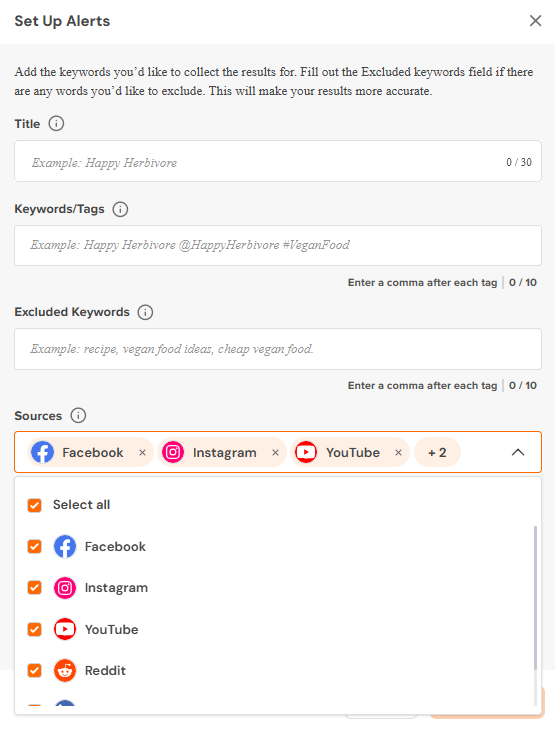
Social Champ’s Social Listening Tool When it comes to combining ease of use with robust features, Social Champ is at the top of the list.
It’s an all-in-one tool ideal for businesses wanting to optimize their social media listening strategy.
Key Features:
- Multi-Platform Scheduling: Schedule and manage posts across multiple platforms such as Facebook, Instagram, LinkedIn, TikTok, YouTube, X, Pinterest, Threads, Bluesky, Mastodon, and Google Business Profile.
- Content Calendar: Plan and visualize all scheduled posts in a single content calendar to ensure consistent posting.
- Performance Tracking: Track key performance and engagement metrics to continuously refine and optimize your social media strategies.
- Team Collaboration: Collaborate with multiple team members on campaigns for smoother workflow and efficiency.
- Unified Social Inbox: Manage and respond to comments and messages from all platforms in one centralized Social Inbox.
- Social Listening: Monitor brand mentions, keywords, and trends to engage with your audience in real-time.
- Competitor Analysis: Analyze competitor activities to identify trends, opportunities, and areas for improvement in your strategy.
Pros:
- Real-Time Monitoring: Social Champ allows you to monitor keywords, brand mentions, hashtags, and even competitors in real-time on platforms such as Facebook, Instagram, LinkedIn, and Reddit.
- Listening Analytics: It also helps you monitor the emotions tied to your brand, track relevant hashtags, and pinpoint the most frequently used phrases in conversations.
- All-in-One Dashboard: It brings everything you need onto one dashboard so that it’s easy for your team to stay on top and respond without logging in and out of multiple platforms.
Cons:
- Learning Curve: It is easy for beginners, but unlocking its full potential (particularly its analytics and reporting features) may take a little time and exploration.
- Advanced Features Limited to Higher Plans: Advanced features are restricted to premium pricing. As a starter, you might need to upgrade to take advantage of its features thoroughly. That being said, Social Champ’s premium plans are extremely affordable, even for small and medium-sized businesses.
- Costly for Small Teams: Although Hootsuite has robust features, its cost can be higher, particularly if you require access to advanced features such as in-depth reports and team management.
- Steep Learning Curve: Due to its various features, getting used to the platform and its complex reporting tools may take some time.

Ready to Master Social Listening With Social Champ?
Take control of your social media strategy today. Monitor brand mentions, track key metrics, and improve engagement. Try it now!
-
Hootsuite
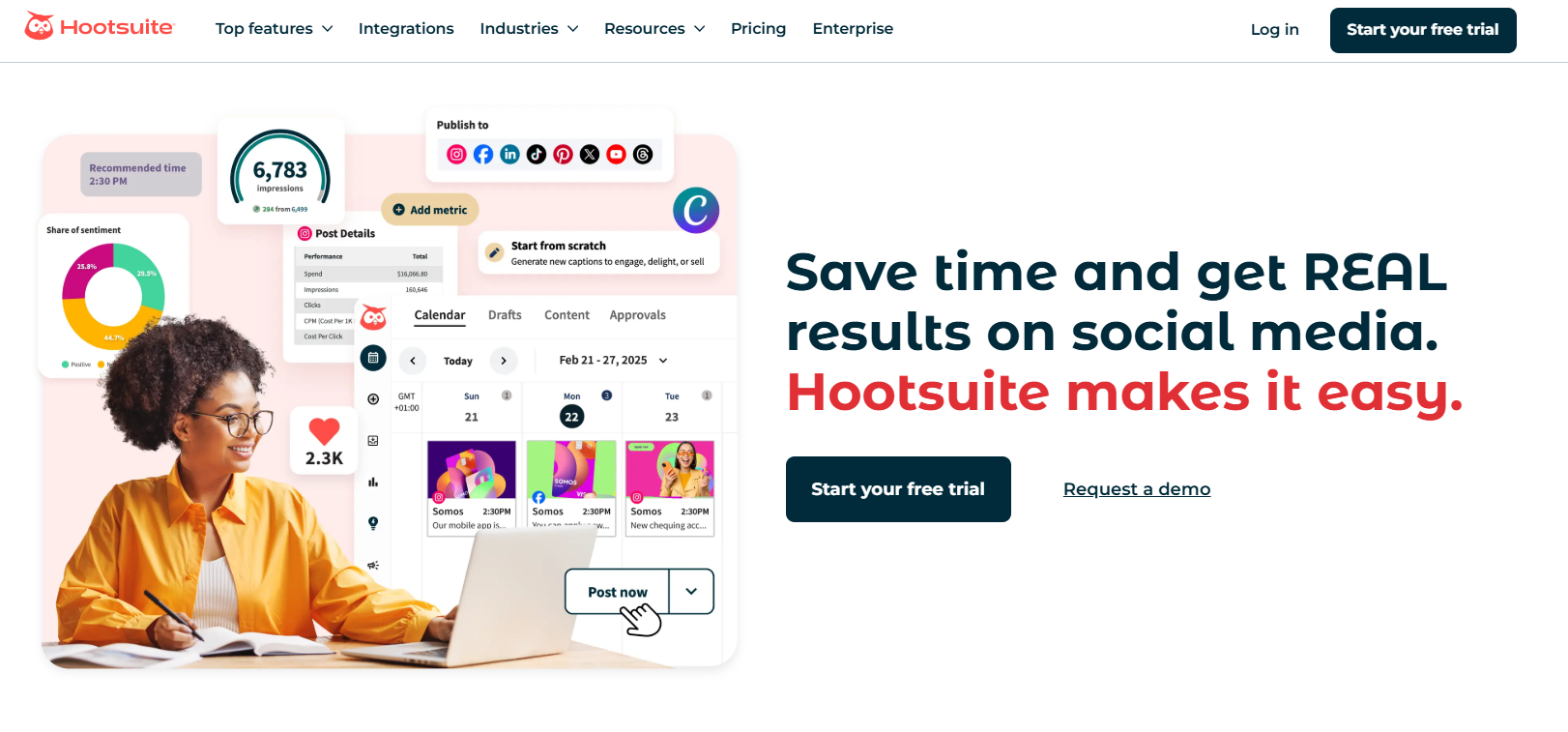
Hootsuite’s Landing Page Hootsuite has long been a staple in the social media management world, and it’s also great at social listening.
It’s perfect for businesses that require a tried-and-true tool with a wide range of features.
Pros:
- Wide Social Platform Support: Hootsuite supports the most prominent social networks, such as Facebook, X, Instagram, and LinkedIn. This enables companies to track many social conversations from one dashboard.
- Scheduling and Analytics: Besides social listening, Hootsuite stands out for its powerful scheduling features and in-depth analytics, so you can listen and post from the same platform.
- Team Collaboration: It has excellent team collaboration features, allowing several users to handle and respond to social interactions effectively.
Cons:
-
Brandwatch
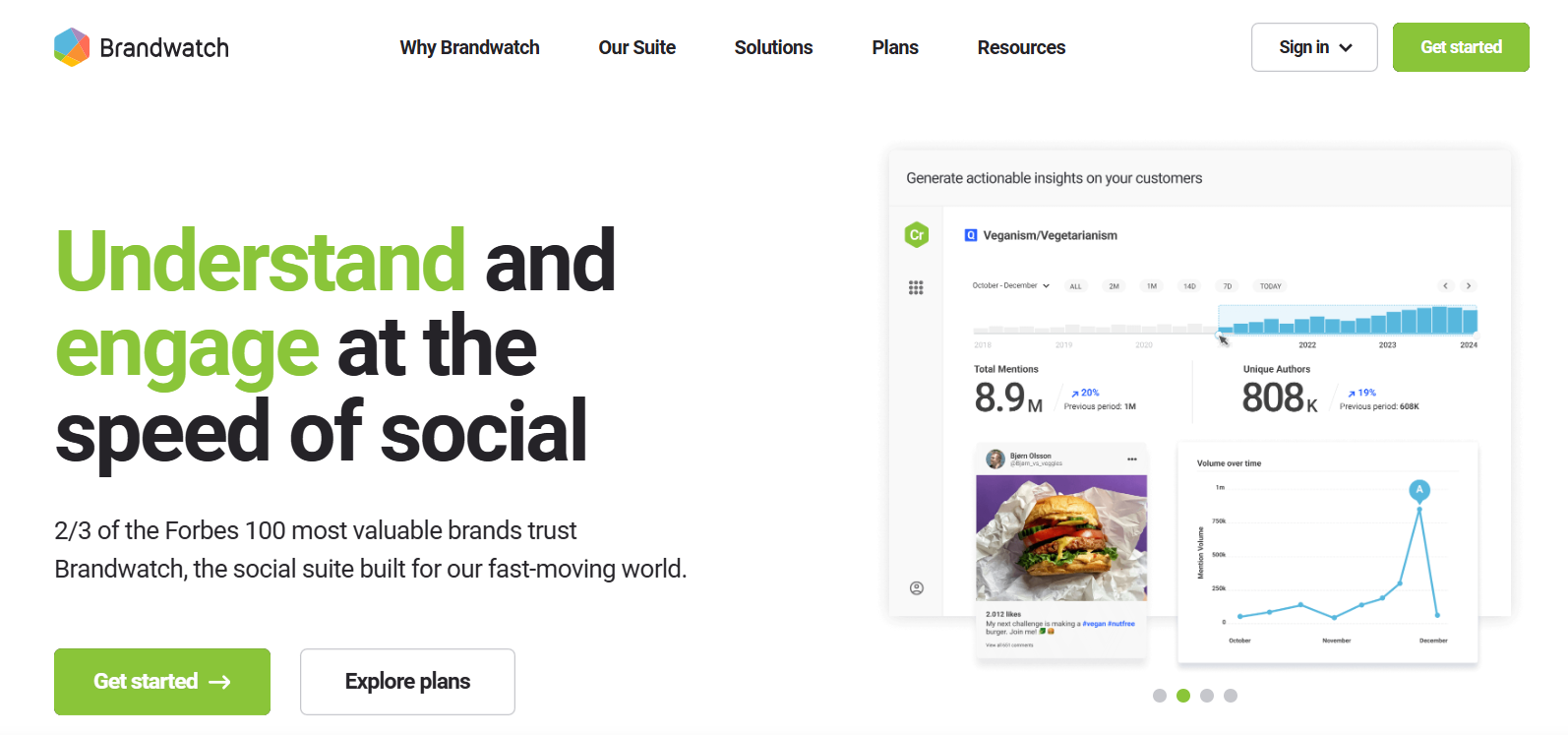
Brandwatch’s Landing Page For businesses looking for advanced features, Brandwatch is a powerful option.
It provides deep insights into brand mentions, customer sentiment, and industry trends, making it a great fit for larger enterprises or those with advanced social listening needs.
Pros:
- In-Depth Sentiment Analysis: Brandwatch’s sentiment analysis is one of the best in the industry. It helps businesses understand customer feelings toward their brand, products, or industry trends.
- Customizable Dashboards: The software enables you to build custom dashboards to monitor the important metrics that are most concerning to your company.
- Competitor Coverage: Brandwatch stands out in competitor tracking, enabling you to compare your brand’s performance to your competition’s.
Cons:
- Expensive: Brandwatch tends to be a high-end tool, with costs that can be out of reach for smaller companies or startups.
- Complex Interface: With its array of functionalities, Brandwatch can be daunting for new users of social listening or those who do not have specialized teams of analysts.
As you design a good social listening strategy, these tools will move your business up a notch.
Social Champ, Hootsuite, or Brandwatch—no matter which you opt for, incorporating social listening into your business plan is something you need to do to stay ahead in 2025.
Conclusion
In 2025, a robust social listening strategy is crucial for businesses wanting to remain competitive and build meaningful relationships with their audience.
By using the right tools—Social Champ, Hootsuite, or Brandwatch—you can get meaningful insights to control brand reputation, monitor trends, and respond to customer needs in real-time.
The important thing is to stay consistent and ahead of the game when monitoring social conversations.
With the right strategy, your social listening can guide you towards making better decisions, interacting with your audience positively, and driving business growth.
